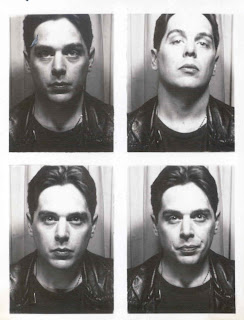Monday, February 19, 2007
Tibetan Photo Project
The creator does have close ties to the Dalai Lama, and the site is part of a larger political movement, as one might expect. Still there are some nice images, and some video, too.
Playing Cards - Popular Scripture
.queen.of.the.eternity. by =noah-kh on deviantART
The Queen of Hearts, the Ace of Spades, the Trumps and Jokers. I recently found an interesting site, trionfi.com, with several good articles on the cards, their history, and iconography.
It's interesting to me as a former card game player and tarot deck user, to think of the hold some of the ideas present in the deck still have on our imaginations, the trump suit, in particular, absent from modern playing card decks apart from the joker/fool.
Anyway, there are a number of ways of parsing the meaning of these games/divination practices. They might be expressions of Jungian archetypes, records of aesthetic transmutation, testimonials on the human love of chance and order or maybe rituals of inclusion.
For some reason they remind me of two other medieval practices:
Stain Glass Windows, like this 13th century one from Speyer displaying the temptation of Adam and Eve:

And the images from the spiritual exercises of Ignatius of Loyola:

It's more than just the style or composition that reminds me of trump cards... There's something about the theory behind the imagery. I think it has to do with a personal experience of the sacred, some unmediated access in a time when the record of revelation was still withheld from the lay people of Christian Europe. There is something different about art that has to stand in for a withheld document, a mnemonic link in the form of an experience of art.
Friday, February 16, 2007
The Spread of Religion
I found the Judaism element kind of funny for some reason.
Tolerance and Religion
In a society with a fluctuating commitment to secularism, the promotion of tolerance is usually the highest practical moral stance reasonable people can be expected, or expect others to adopt.
Ina secular community, diversity is protected by the creation of strong boundaries between the public and the private domains, and granting privilege to private belief. Also required is the creation of parallel civic identities that the individuals in the community can assent to regardless of their religious affiliation, or lack thereof.
This means a person should have access to a public identity that does not depend on any religious beliefs or practices, and allows for full and equal participation in all public life.
For people with a wide variety of religious beliefs and practices to all live together without economic or social discrimination they must see others, and be seen by them, as fellow citizens rather than as members of particular religious groups.
For religious people, secular democracies are a mixed blessing. A minority group protects itself when it seeks to strengthen the separation of church and state. By promoting secularism, the minority prevents the imposition of the majority belief on its members. The requirements of secular identity, however, mean recognizing the possibility of a full and equal life without their particular religion, or any religion at all.
It is possible that religious people participate fully in a secular public sphere while maintaining the necessity of their religious beliefs internally. They can create supportive links between non-religious public identity and private belief. This strategy, however, undermines the religious persons ability to communicate the justification for their public positions to people who do not share their faith.
Any public policy or legal issues in a secular society must be justified through secular argumentation, with non-religious language that all citizens should be able to assent to or reject regardless of their religious beliefs.
In time, as moral and social discourse is defined publicly by more elaborate non-religious language, the non-religious civil identity becomes pernicious: secular authority becomes more compelling, carries more weight, than religious authority, non-religious philosophical and scientific interpretations become more useful than traditional perspectives, etc… In time, the irrelevance of religious beliefs and practices to society must become a problem for the individual believer.
How can a person hold one private identity with significant religious beliefs and practices justified by faith, while simultaneously holding a public identity in which the same beliefs and practices are justified by some secular authority?


